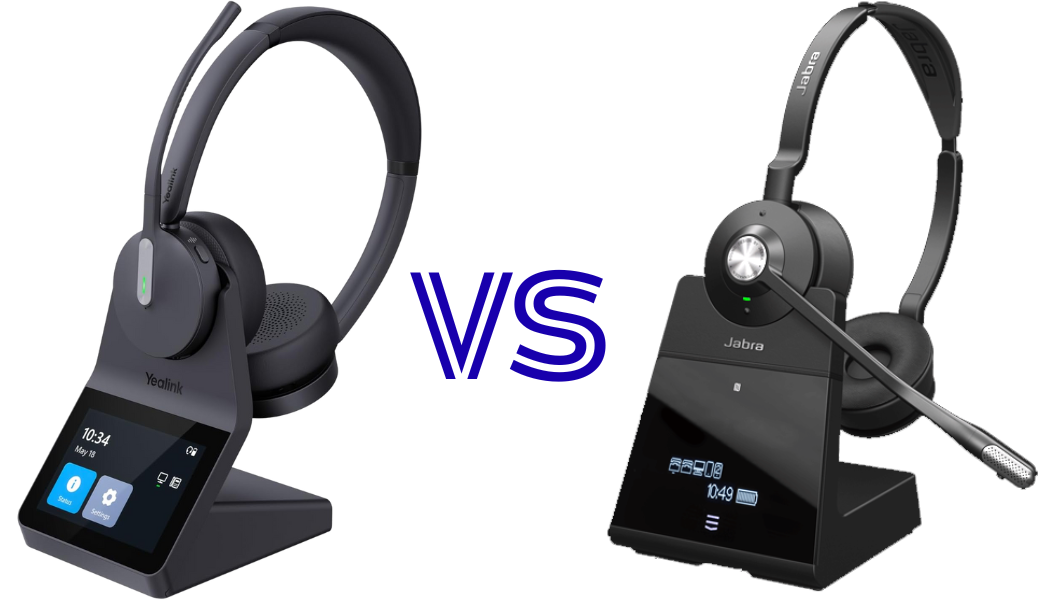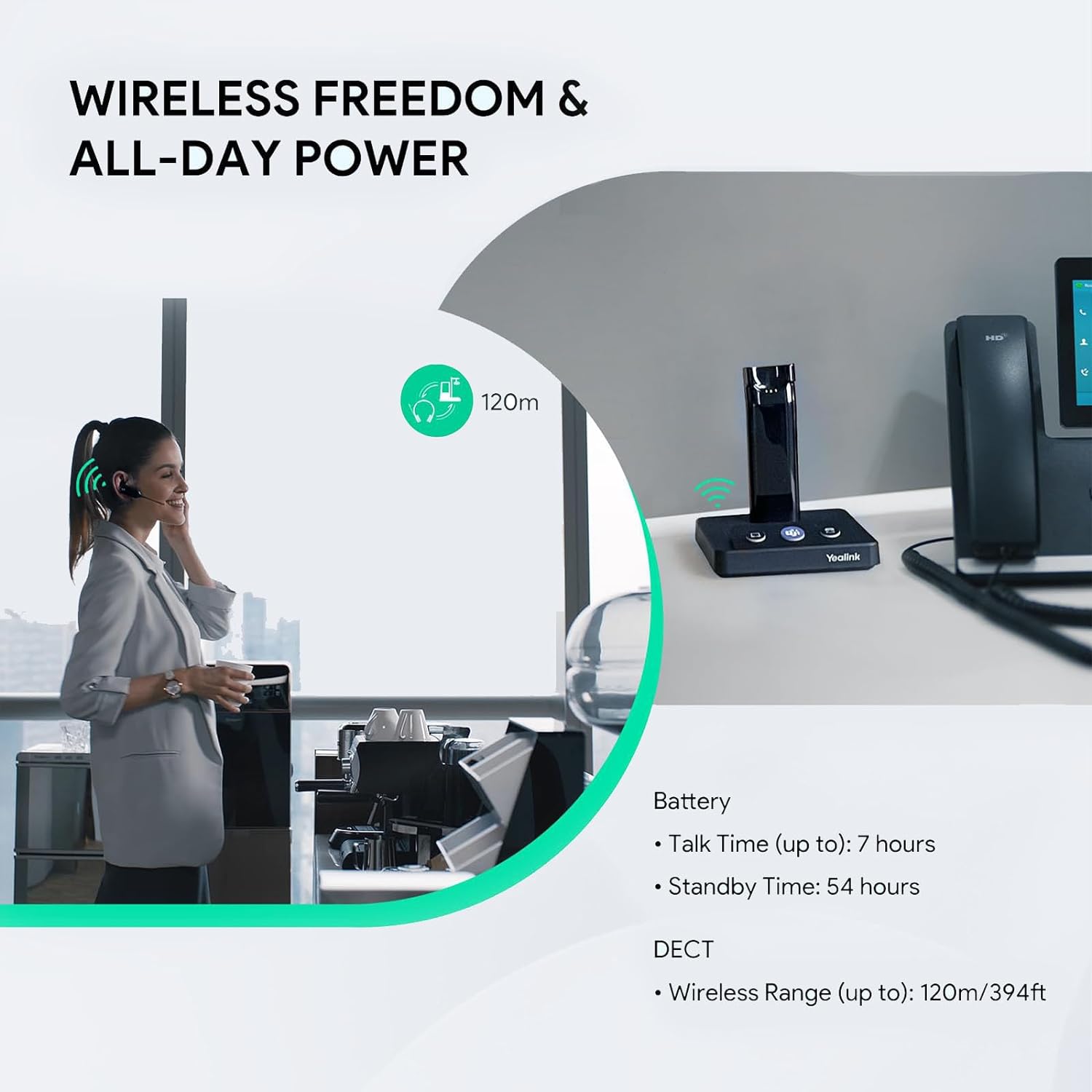If you find yourself in the market for a new office headset, you might be wondering where’s the best place to start.
If you’re like a lot of people, you’ll probably begin by opening up a browser on your favorite computer and heading straight over to Amazon or Google. Here, you’ll begin your trek towards new headset ownership.

These days many companies will have an Amazon store, so this is a great place to find 3rd party and unbiased reviews. On the sellers Amazon page, you'll be able to click on the reviews and see comments from other customers on their experience.
Amazon is very strict on sellers so if the company has a lot of good reviews and is able to continue selling on Amazon for years, that's a great sign to know the company is reputable.


While traveling down that path, you’ll no doubt encounter a few bumps along the way. Bumps in the form of questions as to which model to choose among the many available options.
In this blog, I’ll attempt to give you some ideas on how you might proceed in order to help steer you towards a new headset that’s just right for you. So, sit back, grab your favorite beverage and let’s take the journey together to help sort through clutter that stands between you and your new office headset.
Reviews, due diligence and where to go
As mentioned earlier, Google and Amazon are great places to start. After all, it’s not like places to buy office headsets are at the top of the advertising we encounter each day, right?
That said, this is a good place to begin. However, soon after you open those doors and enter, you’ll be met by model after model, numerous brands and even more sellers. By now, your head begins to feel lighter than normal and you sense a slight bit of confusion is beginning to set in.
This model has these reviews, that model has similar reviews. These other models are priced about the same, but their reviews differ a lot. Why is that model so much more expensive than others? The questions continue as the search continues.
For most people who do their own office headset research, they typically find themselves at one point with more questions than answers. It’s at this point that you’ll find yourself at the headset twilight zone. By now, your eyes should be glazing over a wee bit. Still, you’re a trooper, and determined, so you press on.
By now you should be noticing that there are different available wearing styles for wired and wireless office headsets. So your first order of business is to select your preferred wearing style
Select your preferred wearing style.
Among the available choices include those headsets that are worn over the head. These headsets offer speakers that cover one ear or two.Covering one ear allows the wearer to hear the caller, but also hear what’s going on around him/her
Covering two ears allows you to better focus and concentrate and be less distracted by surrounding, ambient room noise. So, if one of these is your preferred wearing style, you’ve taken your first step towards a tailored personalized headset solution. But, before you exit the building, know that there’s a couple more options in terms of wearing styles.
Over-the-ear, and convertible. As it relates to headsets, over-the ear is pretty straightforward. It speaks to a headset that’s worn over the ear. You’re on a roll here, keep it up.
But then, things shift and we introduce the final wearing style option; the convertible headset. Right about here, the water gets a bit murky. Hmmm….convertible. Convertible car, check. Convertible bonds, check.
But how does the term convertible apply to office headsets?

Glad you asked. Here’s the short answer; a convertible headset “converts” from an over-the-ear wearing style to that of an over-the-head type. This gives you a couple of different wearing options in one headset. You can switch between these two different styles as needed or as desired.
Decide where you’ll draw the line on rating
In other words, will you only consider those makes/models with a 4-start or above rating? 5-star? Once you know your preferred wearing style and the rating you’re looking for, you’re ready to dig in.
Read user reviews
If there’s a lot of reviews available, take the time to read a lot of them. By doing this, it will give you a good overall sense of what you can expect if you decide to purchase that particular product. Reviews are King (or Queen), and help would-be buyers immensely when it comes to narrowing down the choices and instilling confidence in a given office headset.
Verified reviews are best because they confirm that the reviewer has in fact, purchased the product being reviewed. Pay close attention to things like sound quality, comfort, speed of delivery, ordering experience, and product feature.
Narrow your choices to no more than 3.
Why 3? Research has suggested that when making a decision where there are choices involved, limiting the choices to no more than 3 helps to minimize confusion and indecisiveness. And nobody wants to be confused or indecisive, so back off the gas pedal once you’ve amassed 3 solid office headset options.
Understand which company is providing the office headset
I know, I know this seems obvious and shouldn’t need mentioning. However, if we take Amazon as an example, many people who order office headsets there, believe Amazon is the company fulfilling the order. In some cases, it’s true, they will ship you the product.
However, in many cases the order is LISTED on Amazon, but is being shipped by a completely different company. It’s this company that you will be dealing with for many of the post-sale service requirements such as help with setup and troubleshooting for example.
The point here is to be clear on who’s providing the product, rather than stopping at which website you’re ordering your office headset from.
Research the company
By this, I mean do a little research on the company that’s going to be providing your office headset. No need to do a deep dive unless you’re spending a lot of money to outfit a team, but learn a little about who you’ll be contracting with. A little time spent up front can help to save you a significant amount of headaches later on. Take the time, do some research and you’ll be thankful you did.
Where can you go to do this? Here are a few sources that can be helpful
- Yelp
- Manta
Warranty and pricing
At some point during the decision making process, you’ll find yourself looking at pricing. Price should always be a consideration, but there are other factors that also need to be considered when making your office headset purchase.
Some of these factors include; promptness of delivery, company reputation, ability to assist with setup and troubleshooting, whether they offer trade-in credit for old office headsets, length of warranty, who pays for shipping and under what conditions?
Return policy, whether they offer alternate means of acquiring office headsets such as a month-to-month rental plan or leasing. If you’re going to spend the money, why not get the best value rather than just the best price? Best price situations can oftentimes lead to regret.
Time to pull the trigger.
Now that you’ve researched different makes and models, narrowed down the wearing options to what you prefer and you’ve done your due diligence on vetting the company, it’s time to move forward with your purchase.
Though this all might sound extremely labor intensive, it really isn’t. The overall underlying message here is do some research not only on the office headsets, but with the company that will be standing behind them. Reputation and ratings do matter, so it’s well worth the time to explore both.
Final note:
What if the office headset you selected is a bit out of your budgets reach? Do you revert to a lesser product? Do you buy less than what you need? Do you postpone your purchase until additional budget dollars are available? Here are a couple of parting thoughts for you to consider before you abandon your optimum office headset solution:
- Headset Trade-in. Have some old, unwanted office headsets collecting dust in a storeroom? Why not look to trade them in which can help lower your costs on acquiring new ones?
-
Month-to-month headset rental program. Not everyone has enough money in their budget to get all the headsets they need. Rather than compromising on the desired model(s), scaling back the number of headsets you purchase, or worse, postpone getting them at all.
Instead, you might consider renting your office headsets for a low monthly rate that would include everything such as breakage, shipping, accessories, upgrades, downgrades, direct replacements and no lengthy contract. If something like this makes sense to you and to your budget.
When you get a new office headset, you should expect to have it for the next 4 - 5 years. With that in mind, it’s important to make the best decision you can by doing your research on the office headset that gives you the best overall value. Only then can you make your purchase with the confidence knowing you made the right choice






























